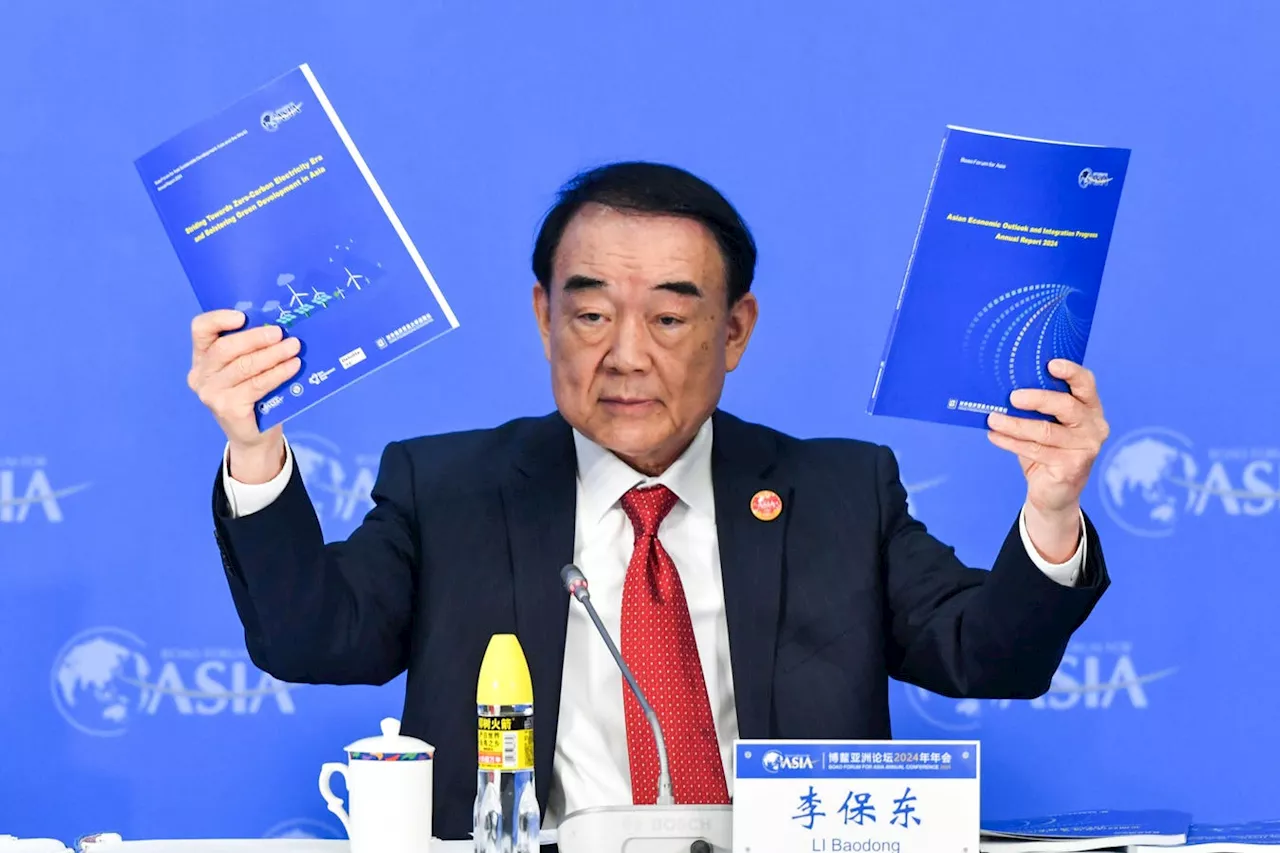The World Economic Forum (WEF) analyzes the dual nature of artificial intelligence (AI), highlighting its potential to drive market growth and job creation while simultaneously posing significant risks to society. The report emphasizes the need for investment in education, governance, and human oversight to mitigate these risks and ensure a successful transition into an AI-driven future.
Artificial intelligence (AI) is rapidly emerging as both a catalyst and a challenge, according to the World Economic Forum ( WEF )'s latest analysis. While AI is driving market growth and job creation, it is also reshaping risk landscapes in profound ways.
The WEF reports reveal a compelling story of how shifts in the labor market are intertwined with changes in macroeconomic risk, raising crucial questions about whether workforce transformations will exacerbate societal risks or help mitigate them.Between 2025 and 2030, significant technical capability growth is anticipated, with AI and big data leading the fastest-growing skills. These skills will be followed by networks, cybersecurity, and technological literacy. Technology-related roles are projected to dominate job growth, with roles like Big Data Specialists, Fintech Engineers, AI/ML Specialists, and Software Developers at the forefront. A significant trend is emerging as half of employers plan to reorient their business around AI, two-thirds aim to hire AI-specific talent, while 40% anticipate workforce reductions in automatable tasks. This indicates a clear market dynamic with winners and losers.However, the optimism surrounding AI's economic potential is contrasted by the WEF's global risks assessment, where digital and information threats emerge as leading concerns. The risk map identifies five major digital threats: misinformation and disinformation, cyber espionage and warfare, adverse outcomes of frontier technologies, censorship and surveillance, and online harms. While AI's adverse outcomes currently rank low in the two-year forecast, they show one of the steepest climbs in the 10-year risk assessment, a trend that demands careful attention. Generative AI's ability to mass-produce false or misleading content presents a central challenge. The increasing volume of online content, coupled with AI-generated material and human error, makes detecting and removing misinformation increasingly difficult across our fragmented media landscape.The WEF highlights a concerning gap: the fastest-growing jobs list lacks crucial roles in information integrity, governance, and educational technology, with cybersecurity experts as the sole exception. This creates a troubling feedback loop: technological advancement drives economic growth while simultaneously strengthening societal polarization, illicit activities, and geopolitical tensions. We are advancing technical capabilities faster than protective frameworks.The WEF recommends three key approaches for the next decade: expanding upskilling for those building and using automated algorithms, focusing on debiasing strategies; boosting funding for digital literacy to combat misinformation and reduce polarization; and improving accountability through human oversight, including supervisory boards and AI councils. The data strongly supports this education-first approach: WEF's survey reveals that misinformation/disinformation (85%) and societal polarization (82%) top the list of risks that respondents believe can be best addressed through public education and awareness initiatives. These technological and societal risks rank significantly higher than economic concerns like talent shortages (48%) or cyber crime (50%), suggesting that educational and awareness initiatives could be particularly effective in tackling digital-era challenges.This trajectory raises critical questions: Are we overemphasizing tool creation while underinvesting in safeguards? Should our growth priorities expand beyond technical innovation to include societal protection? How do we redefine 'success' to include those solving technology-induced challenges? As Edward E. Wilson noted, 'The real problem of humanity is the following: We have Paleolithic emotions, medieval institutions, and godlike technology.' The challenge ahead lies in bridging these gaps while maintaining technological progress. The WEF data suggests that we can successfully navigate this transformation with proper investment in education, governance, and human oversight
AI Artificial Intelligence WEF World Economic Forum Technology Risks Job Market Upskilling Digital Literacy Misinformation Societal Polarization Cybersecurity
United States Latest News, United States Headlines
Similar News:You can also read news stories similar to this one that we have collected from other news sources.
 WEF live blog: President Trump set to address WEF as the world looks for policy cluesThis is CNBC’s live blog covering all the latest news, views and action on Day 4 of the World Economic Forum in Davos, Switzerland.
WEF live blog: President Trump set to address WEF as the world looks for policy cluesThis is CNBC’s live blog covering all the latest news, views and action on Day 4 of the World Economic Forum in Davos, Switzerland.
Read more »
 The Real Threat Of AI: WEF Global Risks Report 2025The World Economic Forum Global Risks Report 2025 highlights the dual nature of technological acceleration—offering profound opportunities and unprecedented risks.
The Real Threat Of AI: WEF Global Risks Report 2025The World Economic Forum Global Risks Report 2025 highlights the dual nature of technological acceleration—offering profound opportunities and unprecedented risks.
Read more »
 Armed Conflict, Extreme Weather, and Disinformation Top Global Risks for 2025, WEF Survey RevealsA new World Economic Forum (WEF) survey identifies armed conflict, extreme weather, and disinformation as the most pressing global risks for 2025. The survey, conducted among nearly 3,000 leaders from over 130 countries, highlights the escalating geopolitical tensions, climate crisis, and growing societal divisions that are straining the global system.
Armed Conflict, Extreme Weather, and Disinformation Top Global Risks for 2025, WEF Survey RevealsA new World Economic Forum (WEF) survey identifies armed conflict, extreme weather, and disinformation as the most pressing global risks for 2025. The survey, conducted among nearly 3,000 leaders from over 130 countries, highlights the escalating geopolitical tensions, climate crisis, and growing societal divisions that are straining the global system.
Read more »
 New Ceramic Catalyst Uses Sodium and Boron to Drive Sustainable Industrial ReactionsA new ceramic catalyst, using sodium and boron, has been developed to drive sustainable industrial reactions. This advancement offers a cost-effective and environmentally friendly alternative to traditional catalysts based on transition or noble metals. The catalyst's efficiency and accessibility pave the way for greener chemical processes, utilizing renewable energy and resources.
New Ceramic Catalyst Uses Sodium and Boron to Drive Sustainable Industrial ReactionsA new ceramic catalyst, using sodium and boron, has been developed to drive sustainable industrial reactions. This advancement offers a cost-effective and environmentally friendly alternative to traditional catalysts based on transition or noble metals. The catalyst's efficiency and accessibility pave the way for greener chemical processes, utilizing renewable energy and resources.
Read more »
 Trade, Tariffs, AI and Guterres Dominate WEF Agenda in DavosThe World Economic Forum's annual meeting in Davos is underway, with discussions focused on global trade, tariffs, the rise of artificial intelligence, and the role of the United Nations. UN Secretary-General António Guterres is scheduled to deliver a keynote speech, while leaders from around the world will explore economic growth potential and the challenges posed by AI.
Trade, Tariffs, AI and Guterres Dominate WEF Agenda in DavosThe World Economic Forum's annual meeting in Davos is underway, with discussions focused on global trade, tariffs, the rise of artificial intelligence, and the role of the United Nations. UN Secretary-General António Guterres is scheduled to deliver a keynote speech, while leaders from around the world will explore economic growth potential and the challenges posed by AI.
Read more »
 WEF Davos 2023: AI, Trade Tariffs, and Global Growth in FocusThe World Economic Forum (WEF) in Davos will address key issues like AI's potential and risks, President Trump's trade tariffs, and the economic outlook of China and Russia. Discussions will also focus on climate action and global security.
WEF Davos 2023: AI, Trade Tariffs, and Global Growth in FocusThe World Economic Forum (WEF) in Davos will address key issues like AI's potential and risks, President Trump's trade tariffs, and the economic outlook of China and Russia. Discussions will also focus on climate action and global security.
Read more »
